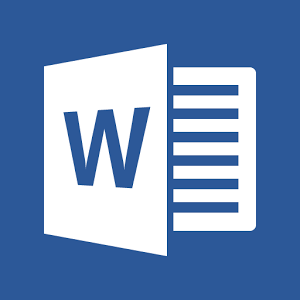Pengaruh Terpaan Berita Online Kompas.com dan E-Wom di Media Sosial “X” pada Kasus Ledakan Depo Pertamina Plumpang terhadap PT Pertamina (Persero)
Abstract
In the rapidly evolving digital communication, the dynamics of online news consumption and electronic word of mouth (eWOM) have become integral components influencing public perceptions of corporate entities. This research seeks to explain the relationship between online news exposure of Kompas.com, electronic word of mouth, and their influence on the company reputation of PT Pertamina (Persero). This research uses a quantitative methodology, utilizing the cluster random sampling technique to ensure a representative sample. A structured questionnaire distributed to 185 respondents living in six sub-districts of North Jakarta. With the framework of Agenda Setting Theory, this research explores how online news exposure and electronic word of mouth collectively contribute to shaping the public agenda, thereby influencing perceptions of company reputation. The Agenda Setting Theory provides a theoretical view through which to analyze the process by which certain issues gain prominence in the public sphere, guiding our investigation into the dynamics of online news and eWOM on corporate reputation. The results of this research show: 1) Exposure to Kompas.com online news has a significant effect on the reputation of PT Pertamina (Persero) with a regression coefficient value of 0.281; 2) Electronic word of mouth has a significant effect on the reputation of PT Pertamina (Persero) with a regression coefficient value of 0.230; 3) Simultaneous exposure to online news and E-WOM has a significant effect on the reputation of PT Pertamina (Persero) with a Sig value. 0,000.
Keywords
Full Text:
PDFReferences
Andjani, M. D. (2009). Media Relations Sebagai Upaya Pembentuk Organisasi. Jurnal Majalah Ilmiah Sultan Agung, 45(119), 57-72.
Baran, S. J & Davis, D. K. (2013). Mass Communication Theory. 7th Edition. Cengage Learning.
Goyette (2010). E-WOM Scale: Word-of-Mouth Measurement Scale for e-Services Context. Journal of Administrative Sciences, 27, 5-23.
Griffin, Em. (2012). A First Look At Communication Theory, 8th Edition. McGraw-Hill.
Hardjana, A. A. (2008). Komunikasi dalam Manajemen Reputasi Korporasi. Jurnal Ilmu Komunikasi, 5(1).
Hasna, Safira & Irwansyah. (2019). Electronic Word of Mouth Sebagai Strategi Public Relations di Era Digital. Jurnal Ilmu Komunikasi, 8(1), 18-27.
Hennig-Thurau., et al. 2004. Electronic Word of Mouth Via Consumer-Opinion Platforms: What Motives Consumers to Articulate Themselves On the Internet. Journal of Interactive Marketing. 18(1).
Khusnudin, K. (2020). Intangible Asset Dalam Pengembangan bisnis Perspektif Maqasid Syariah. Journal of Economics and Business, 1(1), 40-44.
Kompas.com. (2023). Diakses pada 25 Januari 2024 dari https://megapolitan.kompas.com/read/2023/03/20/07132271/apa-saja-bantuan-yang-diberikan-pertamina-kepada-korban-kebakaran-depo
Kotler, P & Keller, K L. (2016). Marketing Management. 15th Edition. Pearson Education,Inc.
Littlejohn, S. W & Foss, K. A. (2008). Teori Komunikasi. Jakarta: Penerbit Salemba Humanika.
Littlejohn, S. W. (1983). Theories of Human Communication. 2nd Edition. Wadsworth,Inc.
Masitah, A.D & Dewi, D. S. K. (2022). Analisis Opini Publik Berdasarkan Teori Agenda Setting Pada Proses Perencanaan Pemindahan IKN. Jurnal Ilmu Sosial dan Pendidikan, 6(3).
Morissan. (2012). Metode Penelitian Survei. Jakarta: PRENADAMEDIA Group
Pertamina.com. (2023). Diakses pada 21 Agustus 2023 dari https://www.pertamina.com/id/news-room/news-release/tembus-fortune-global-500-ini-cara-pertamina-tekan-emisi-karbon-dan-dukung-pertumbuhan-ekonomi
Priyono. (2016). Metode Penelitian Kuantitatif. Sidoarjo: Zifatama Publishing.
Purba, R.T., Safitri, D. & Anindhita, W. (2023). Pengaruh Terpaan Berita Ibu Kota Negara (IKN) di Media Online Kompas.com Terhadap Sikap Mahasiswa. Jurnal Ilmiah Ilmu Komunikasi, 20(1), 43-50.
Ring et al. (2014). Word-of-Mouth-Online, Offline, Visual or Verbal?. Journal of Travel Research, 55(4), 481–492.
Shimp, Terence A. (2003). Periklanan Promosi & Aspek Tambahan Komunikasi Pemasaran Terpadu, Jilid I (edisi 5), Jakarta :Erlangga.
Staubhaar, J & La Rose, R. (2002). Media Now: Communications Media in the Information Age, London: Wadsworth.
Sugiama, A. G. (2013). Metode Riset Bisnis dan Manajemen. Jakarta: Guardaya Intimarta
Sugiyono. (2013). Metode Penelitian Kuantitatif, Kualitatif dan R&D. Bandung: Alfabeta.
Supriyanta, I. & Fauzi, A.. (2021). Ini Pentingnya Membangun Reputasi dan Citra Perusahaan di Era Digital. Diakses pada 8 Juni 2023 dari https://www.suara.com/bisnis/2021/10/01/164227/ini-pentingnya-membangun-reputasi-dan-citra-perusahaan-di-era-digital
Wells, W., Burnett, J., & Moriarty, S. (2000). Advertising Principles And Practice, 5th Edition. New Jersey : Prentice-Hall International.
DOI: https://doi.org/10.36441/mahardikaadiwidi.v3i2.1543
DOI (PDF):
https://doi.org/10.36441/mahardikaadiwidi.v3i2.1543.g916
Article Metrics
Abstract views : 192 times
PDF views : 141 times
Dimension Citation Metrics
Refbacks
- There are currently no refbacks.
DOI (PDF):
https://doi.org/10.36441/mahardikaadiwidi.v3i2.1543.g916Article Metrics
Abstract views : 192 timesPDF views : 141 times
Dimension Citation Metrics
Refbacks
- There are currently no refbacks.
Refbacks
- There are currently no refbacks.


